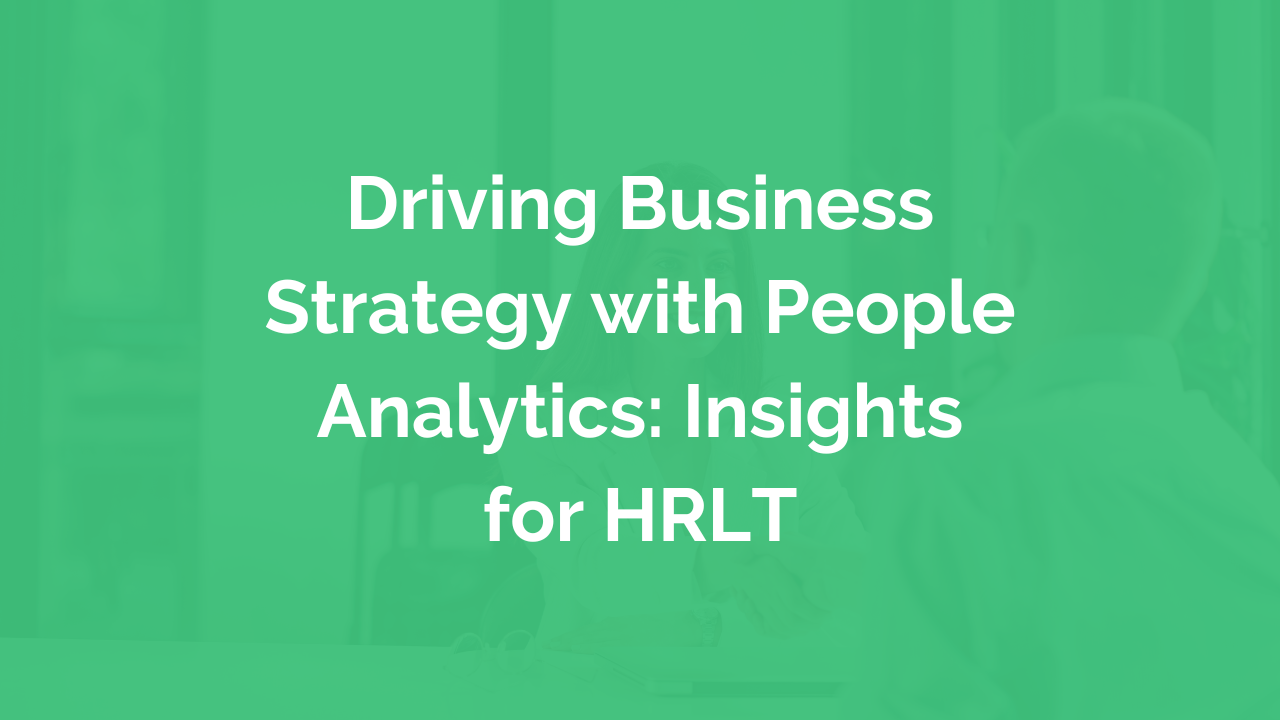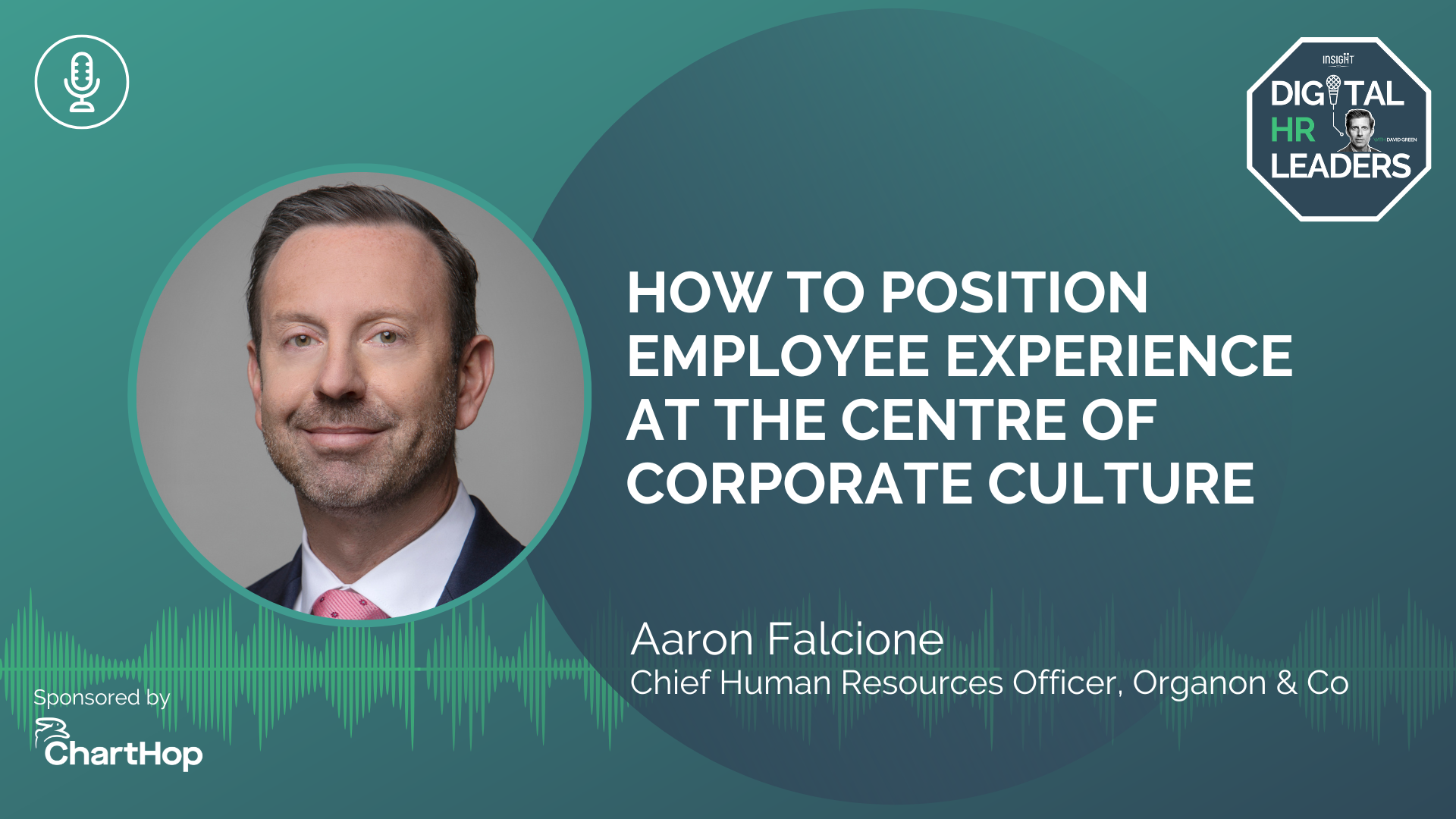Driving Business Strategy with People Analytics: Insights for HRLT
Organisational operating models are changing profoundly, transitioning from traditional job roles and hierarchical career ladders to a new era of a purpose-driven workforce.
As HR leadership teams navigate this dynamic landscape, the key to success is harnessing people analytics to gain deeper insights into their employees' skills, experiences, and expectations.
Talent Management Optimisation
Talent management optimisation is one of the critical strategic HR initiatives where people analytics plays a pivotal role. By leveraging data-driven insights, HR leadership development teams can unlock the following benefits:
Predictive Hiring
People analytics tools enable the HR leadership team to predict the success of candidates based on historical hiring data and employee performance. By fine-tuning recruitment strategies, organisations can ensure a strong cultural fit and identify attributes that lead to top-performing employees, as well as promote a culture of engaged employees.
Continuous Development:
Understanding the existing skills and competencies within the organisation, and identifying those required for future success, enables the successful design of personalised learning pathways. This strategic approach aligns individual capabilities with the evolving business requirements, fostering continuous growth and development.
Succession Planning:
Leveraging data on employee performance and potential, the HR leadership team can identify high-potential individuals and build a robust succession pipeline. This proactive approach to talent management ensures a seamless leadership transition when needed.
Employee Engagement:
People analytics allows us to visualise data and gauge employee engagement levels through sentiment analysis, surveys, and feedback data. However, getting real value from employee engagement has to go beyond these surveys and analysis of data. With these insights, HR leadership teams can implement targeted initiatives to boost engagement and foster a positive work culture.
Workforce Productivity Enhancement
Strategic HR Initiatives such as the enhancement of workforce productivity are essential for organisational success, and people analytics offers valuable tools for this purpose:
Workforce Optimisation:
Data-driven insights allow companies to optimise workforce allocation based on skill sets and project requirements. The right people can then be deployed to suitable projects at the right time, ensuring optimal resource utilisation and productivity while enhancing cross-functional collaboration.
Performance Management:
People analytics provides objective performance data that facilitates fair and accurate performance evaluations. This transparent approach to performance management promotes employee morale, and continuous improvement.
Well-being and Productivity:
By analysing employee well-being data through sentiment analysis, surveys, and even organisational network data, HR leaders can gain insights into the factors that support or detract from employee performance and well-being throughout their employee lifecycle. This allows organisations to develop targeted initiatives and strategies to boost well-being and productivity.
Top 5 areas where people analytics adds business value, Source: (Insight222 People Analytics Trends report 2022)
Business Strategy Alignment
However, the best HR analytics practices ensure that strategic HR initiatives are more than just operational imperatives. They should also be aligned with strategic alignment with the organisation's broader business objectives. To ensure this, the HR leadership team must understand the business problems they are trying to solve and then use analytics to gain insights into how HR can contribute.
For example, if the organisation seeks to expand in a particular market or product segment, HR could leverage people analytics tools such as network analysis to identify internal subject matter experts who can help drive innovation and growth in that area.
Therefore once you identify the business problem, you can formulate relevant hypotheses and leverage analytics to gain insights into how the HR strategy can help. This business strategy alignment can then inform data-backed decision-making related to hiring, talent development, performance management, and more, leading to improved business outcomes.
Taking the Lead in HR Analytics Transformation
Data-driven decision-making becomes second nature when you have people analytics at your disposal. Whether it's restructuring teams, revising compensation policies, or building effective learning and development programs, HR leaders can rely on data-driven insights to ensure they are driving the right outcomes.
Putting people analytics at the centre of business, our Insight222 research ‘Upskilling the HR Profession: Building Data Literacy at Scale” found that HR leadership teams should be at the forefront of role-modelling data-driven decision-making and embedding it into the organisation's culture.
The research highlights that when the CHRO and HR leadership team actively endorse and use people data and analytics, HR practitioners are more likely to develop their data literacy skills and apply data insights. This reinforces the importance of HR leadership setting the example for data-driven decision-making, fostering a culture where data is appreciated and embraced as a strategic asset.
To leverage the full potential of people analytics, you will also want to invest in upskilling HR professionals in data literacy and analytical skills. This will ensure that your HR team has the expertise to identify, interpret and act on data-driven insights for business success. And to support that, organisations should ensure they have the right technology infrastructure and resources in place to productise insights and make people analytics more accessible for those HR professionals with limited technical experience and time to undergo analysis.
By embracing data-backed decision-making and investing in people analytics capabilities, HR leadership teams can drive business outcomes and become a trusted strategic partner to the organisation. This is how you unlock the full potential of people analytics and pave the way towards organisational success for your company.
Unlocking the Potential of People Analytics for Strategic HR Decision-Making
People analytics is a powerful tool that can be used to drive business success and transform HR into a strategic partner. Taking advantage of the best practices outlined in this article, HR leadership teams can leverage HR analytics for data-backed decision-making to enhance workforce productivity and align their talent management optimisation strategies with the organisation's broader business objectives.
And by investing in data literacy skills and upskilling the team in analytics, you can ensure that people analytics becomes second nature - unlocking its true potential for your organisation and showing value to business leaders.
With the right approach, statistical tools and resources, HR leadership teams can transform their organisations through people analytics and become the drivers of organisational performance.
TRANSFORM YOUR PEOPLE ANALYTICS FUNCTION TO ALIGN WITH YOUR STAKEHOLDER NEEDS AND DELIVER MORE BUSINESS VALUE
At Insight222, we partner with our clients to ensure their people analytics efforts are calibrated with stakeholder needs and help them develop an effective roadmap for success. We partner with you to build a clear picture of what your business leaders value about people analytics and then help you understand how to reach their aspirations. The outcome is a roadmap with prioritised activities to combine quick-wins and long-term success. This, typically 16-20 weeks in duration, is a perfect way to immerse your team in leading people analytics practices. Contact us today to find out more and being your journey to transform your people analytics function!







